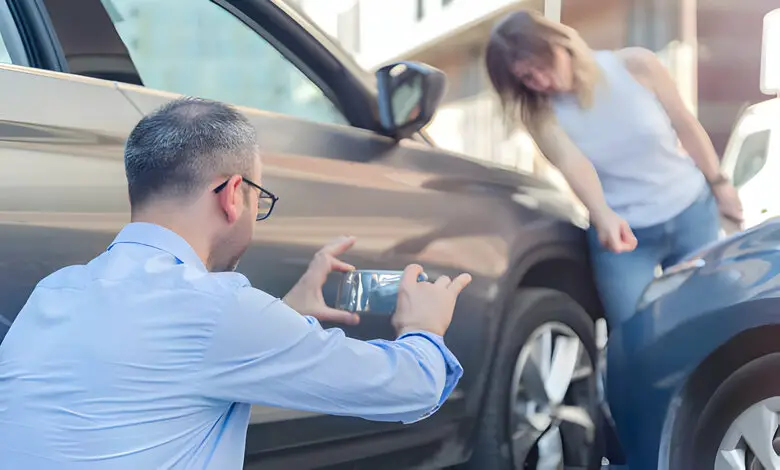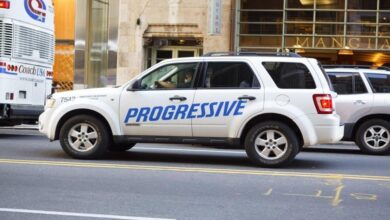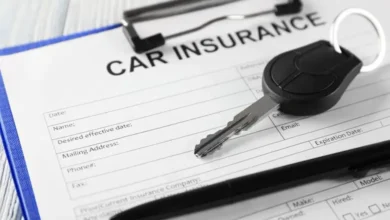Don’t Get Stalled by Surprises! Decode Your Automobile Insurance Policy Before Hitting the Road

Life on the open road promises freedom, adventure, and the comforting hum of your engine. But before you peel out of the driveway, take a moment to peek under the hood—not of your car, but of your automobile insurance policy. It might not be as exhilarating as a roaring engine, but understanding your insurance is more than just ticking a box; it’s your safety net in the face of unexpected bumps and detours.
Think of your policy as a meticulously crafted map, guiding you through the labyrinth of potential accidents and mishaps. But like any map, it takes some deciphering. Don’t be fooled by the legalese and dense jargon; we’re here to equip you with the tools to decode your policy, ensuring you cruise confidently with every kilometer.
Unraveling the Policy Basics
Decoding coverage types
Understanding the nuances of liability, collision, and comprehensive coverage is pivotal. Liability coverage protects against damage caused to others, while collision and comprehensive coverage cater to damages to your vehicle. Let’s delve into the specifics of each.
Liability Coverage:
Imagine cruising down the highway, windows down, wind in your hair. Suddenly, a deer leaps across the road, causing you to swerve and collide with another car. Panic sets in, but a thought brings a wave of relief: you have liability coverage. Let’s delve into this vital part of your automobile insurance and how it acts as your financial guardian angel in such situations.
What is liability coverage?
Think of liability coverage as the knight in shining armor for damage you cause to others during accidents. It has two main components:
- Bodily Injury Liability: This covers medical expenses, lost wages, and pain and suffering for anyone injured in an accident you caused. Imagine hitting a motorcycle, and the rider suffers broken bones and needs extensive medical care. Your bodily injury liability coverage would help pay for their treatment.
- Property Damage Liability: This covers damage you cause to other people’s property, like their car, fence, or even a store window. Let’s say you rear-end the car in front of you, damaging their bumper and taillights. Your property damage liability coverage would kick in to repair the damage.
Example 1: The Bump-and-Run Blues
You’re backing out of your driveway and accidentally bump into a parked car. Luckily, no one is injured, but the other car has a sizable dent. Your property damage liability coverage would cover the cost of repairs for the other driver’s car, saving you from a hefty out-of-pocket expense.
Example 2: Crossroads Catastrophe
At a busy intersection, miscommunication with another driver leads to a collision. Unfortunately, the other driver suffers whiplash and requires physical therapy. Your bodily injury liability coverage would help pay for their medical bills, ensuring they receive the necessary treatment.
Understanding Your Limits and Deductibles
Remember, liability coverage has limits, which are the maximum amounts it will pay for each type of coverage. Minimum limit requirements vary by state, but it’s wise to consider higher limits if you have a valuable car or drive in a high-risk area.
Similarly, your deductible is the amount you pay out of pocket before your insurance kicks in. For instance, if your deductible is $500 and the other car’s bumper repair costs $1000, you’d pay the first $500, and your insurance would cover the remaining $500.
Beyond the Basics: Additional Points to Remember
- Uninsured/Underinsured Motorist Coverage: This is an add-on that protects you if the driver who hit you lacks adequate insurance.
- Medical Payments Coverage: This covers medical expenses for you and your passengers, regardless of fault.
- Rental Car Reimbursement: This helps cover the cost of a rental car while your vehicle is being repaired after an accident.
Liability coverage is not just a legal requirement, it’s a smart investment that protects you from financial ruin in case of an accident. By understanding its components, limits, and deductibles, you can ensure you’re adequately covered and can drive with peace of mind. Remember, it’s better to be prepared than caught off guard on the road. Choose your coverage wisely and let your insurance policy be your silent guardian angel, ready to ride to the rescue whenever needed.
Collision coverage
Collision coverage is auto insurance that protects your vehicle in case of damage from a collision, regardless of who caused the accident. Think of it as a financial airbag for your car. Here’s how it works:
What it covers:
- Accidents with other vehicles: If you rear-end someone at a stoplight, sideswipe another car on the highway, or get T-boned at an intersection, collision coverage kicks in to help repair or replace your car.
- Accidents with objects: Hitting a guardrail, mailbox, fence, or even a rogue deer? Collision coverage has you covered.
- Flipping over: Even if your car rolls over during an accident, your collision coverage will help get it back on its wheels.
What it doesn’t cover:
- Damage from other sources: Theft, vandalism, fire, flood, hail, or animal attacks are not covered by collision insurance. You’ll need comprehensive coverage for those scenarios.
- Wear and tear: Normal wear and tear on your car, like scratches or dents from everyday driving, are not covered.
Examples:
- Example 1: You’re driving cautiously during a snowy day, but another car loses control and crashes into you. Your collision coverage will help pay for the repairs to your car, even though you weren’t at fault.
- Example 2: You’re driving through a construction zone and hit a large pothole, damaging your rim and tire. Collision coverage will typically cover the cost of repairs or replacements.
- Example 3: You’re driving on a country road and swerve to avoid a deer, ending up hitting a tree. Collision coverage will help get your car repaired or replaced, even though you weren’t in collision with another vehicle.
Important points to remember:
- Deductible: You’ll have to pay a deductible before your collision coverage kicks in. This is a fixed amount you choose when you get your insurance policy. For example, if your deductible is $500 and your car needs $1,000 worth of repairs, you’ll pay the first $500 and your insurance company will cover the remaining $500.
- Cost: Collision coverage adds to your monthly insurance premium. The cost varies depending on your driving record, the age and value of your car, and where you live.
- Optional coverage: Collision coverage is not mandatory in most states, but it might be required by your lender if you’re financing your car.
Comprehensive coverage
While collision coverage handles damage from “fender benders,” comprehensive coverage steps in for other unexpected events that harm your car. Think of it as a broader shield against life’s little (and sometimes big) mishaps.
What Comprehensive Covers:
- Theft: Say goodbye to your car, and comprehensive coverage says hello to a replacement (minus deductible, of course). This applies to both full thefts and attempted break-ins.
- Vandalism: Malicious scratches, smashed windows, or spray-painted insults? Comprehensive has your back (and your car’s front).
- Weather Events: Hailstorms, floods, tornadoes, even falling tree branches – nature’s fury is no match for comprehensive coverage.
- Animal Collisions: Hit a furry friend on the road? Comprehensive helps repair the damage, whether it’s a deer-dent or a bird-brained windshield incident.
- Fire or Explosions: From engine fires to spontaneous combustion (hopefully not!), comprehensive can help get your car back on the road or at least compensate for its loss.
Imagine you park your car under a majestic oak tree for some shade. Unfortunately, during a freakishly strong windstorm, a large branch breaks off and crushes your beloved vehicle. Collision coverage wouldn’t apply here, as there was no collision with another car or object. But fear not! Comprehensive coverage comes to the rescue. It would cover the repairs (or, if beyond repair, compensate you for the car’s value) minus your deductible.
Things to Remember:
- Deductible: Similar to collision coverage, you’ll pay a deductible before comprehensive kicks in. Choose an amount you’re comfortable with.
- Cost: Comprehensive adds to your premium, but consider it an investment in peace of mind knowing your car is protected beyond typical accidents.
- Optional Coverage: Unless your car is financed or leased, comprehensive is not mandatory in most states. However, it’s often worth considering for valuable cars or those living in areas prone to specific risks like vandalism or extreme weather.
Understanding policy limits and deductibles
Understanding policy limits and deductibles is crucial when navigating the world of auto insurance. Both play a significant role in determining your financial responsibility in case of an accident or car-related loss. Here’s a breakdown:
Deductible:
- Think of it as your out-of-pocket expense before your insurance kicks in.
- For example, if you have a $500 deductible and suffer $1,000 in damages, you’ll pay the first $500, and your insurance will cover the remaining $500.
- Higher deductibles often translate to lower premiums.
- Choose a deductible amount you can comfortably afford in case of an unexpected incident.
Policy Limits:
- Think of it as the maximum amount your insurance company will pay for each coverage type.
- This typically applies to liability and comprehensive/collision coverages.
- For example, if your liability limit is $250,000 per person and $500,000 per accident, it means your insurance will cover up to those amounts for injuries and property damage caused by you in an accident.
- Choosing higher limits offers greater protection but raises your premiums.
- Consider your driving habits, financial situation, and the potential risks you face to decide on appropriate limits.
Here’s how they work together:
- Imagine you have a $500 deductible and $10,000 in collision coverage with a $25,000 limit.
- If your car suffers $2,000 worth of damage, your $500 deductible applies, and you pay out-of-pocket. The remaining $1,500 will be covered by your insurance.
- If your car gets totaled in an accident and repairs cost $15,000, your insurance will pay up to the $10,000 limit, even though the deductible doesn’t apply to totaled vehicles. The remaining $5,000 is your responsibility.
Here are some additional points to remember:
- Different coverage types might have different deductibles and limits.
- Some states have minimum liability coverage requirements.
- Consider your risk tolerance and financial situation when choosing your deductibles and limits.
- Consult with your insurance agent to understand your options and find the right balance for your needs.
Hidden Gems: Extra Coverages Explained
Personal Injury Protection (PIP)
Personal injury protection (PIP), also known as “no-fault insurance,” is a type of car insurance coverage that helps pay for medical expenses and other related costs if you or your passengers are injured in an auto accident, regardless of who caused it.
Here’s a breakdown of how PIP works:
What PIP covers:
- Medical expenses: This includes the costs of doctor visits, surgeries, medications, and other necessary medical care related to your accident injuries.
- Lost wages: In some states, PIP can also help cover lost wages if you’re unable to work due to your injuries.
- Funeral expenses: In some cases, PIP may even cover funeral expenses and survivor benefits for family members of someone who dies in a car accident.
- Replacement services: This can include coverage for things like childcare, housekeeping, or transportation if you’re unable to do these things yourself because of your injuries.
How PIP works:
- PIP coverage is typically purchased as part of your auto insurance policy.
- If you’re in an accident, you’ll file a claim with your own insurance company, regardless of who caused the accident.
- Your insurance company will then pay for covered expenses up to the limits of your PIP coverage.
Important things to know about PIP:
- PIP is required in some states, but optional in others.
- The amount of PIP coverage you can purchase varies by state and insurance company.
- PIP benefits usually have a time limit, so it’s important to file your claim with your insurance company as soon as possible after an accident.
- PIP coverage may not cover all of your accident-related expenses, so you may still need to rely on your health insurance or other sources of funding.
Uninsured/underinsured motorist coverage (UM/UIM)
Uninsured/underinsured motorist coverage (UM/UIM) is a type of car insurance that can be a lifesaver in the unfortunate event of being involved in an accident with a driver who either doesn’t have any insurance (uninsured) or doesn’t have enough insurance to cover your damages (underinsured). Here’s a breakdown of what it is and how it works:
Uninsured Motorist (UM) Coverage:
- Protects you and your passengers if you’re injured in an accident caused by a driver with no car insurance.
- Can cover medical bills, lost wages, pain and suffering, and funeral expenses in some cases.
- Hit-and-run drivers are also considered uninsured motorists.
- Some states require UM coverage, while others make it optional.
Underinsured Motorist (UIM) Coverage:
- Similar to UM coverage, but applies when the at-fault driver’s insurance isn’t enough to cover your expenses.
- Covers the difference between the at-fault driver’s policy limits and your UIM coverage limit.
- Can cover medical bills, lost wages, pain and suffering, and in some cases, property damage to your vehicle (UIMPD).
- Not required in all states, but recommended as it provides additional protection.
Benefits of UM/UIM Coverage:
- Provides financial security if you’re hit by an uninsured or underinsured driver.
- Can help cover medical bills, lost wages, and other expenses you might incur due to the accident.
- Offers peace of mind knowing you’re protected on the road.
Things to Consider:
- UM/UIM coverage comes with additional costs, so factor that into your budget.
- Choose coverage limits that are sufficient to cover your potential expenses.
- Review your policy carefully to understand the specific terms and exclusions.
Rental car reimbursement
Rental car reimbursement is an optional add-on coverage to your auto insurance policy that helps pay for the cost of a rental car while your vehicle is being repaired after a covered loss. It’s not the same as regular rental car insurance, which you purchase separately for vacation or other personal needs.
Here’s a breakdown of what you need to know:
What it covers:
- Reimburses the rental car cost while your insured car is being repaired due to a covered loss under your policy, such as:
- Accident damage
- Theft
- Vandalism
- Hail, flood, or other weather events
- Mechanical breakdown (may require additional coverage)
- Can cover alternative transportation in some cases, like taxi fares or public transit, if a rental car isn’t available or suitable.
What it doesn’t cover:
- Routine maintenance or repairs on your car
- Damage caused by you driving under the influence
- Rental car costs while traveling or for personal use outside of a repair situation
Key points to remember:
- You need to add rental car reimbursement to your existing policy, it’s not automatically included.
- There are typically daily and total limits on the amount reimbursed. For example, you might get $30/day with a maximum of $900 per claim.
- Your policy details will specify the qualifying events and any limitations.
- Rental car reimbursement typically doesn’t have a deductible, unlike collision or comprehensive coverage.
Benefits of having rental car reimbursement:
- Provides temporary transportation while your car is out of service due to a covered loss.
- Helps maintain your daily routine and schedule.
- Can be relatively inexpensive compared to the cost of renting a car out of pocket.
Considerations:
- Whether your individual driving needs justify the added cost of the coverage.
- The availability and cost of public transportation in your area as an alternative.
- Your risk tolerance and potential financial impact of being without a car during repairs.
Overall, rental car reimbursement can be a valuable addition to your auto insurance policy if you rely on your car for daily activities and want to avoid the inconvenience and expense of being without transportation during repairs. It’s important to carefully review your policy details and understand the specific limitations before adding this coverage.
Factors Affecting Premiums
Demystifying the rating factors
Auto insurance premiums, the amount you pay to keep your car covered, are influenced by a blend of factors related to you, your driving habits, and your car itself. Here’s a breakdown of the key categories:
Driver and Demographic Factors:
- Age: Younger drivers (typically under 25) are statistically more likely to be involved in accidents, so they pay higher premiums. As you age and gain experience, your rates usually decrease.
- Driving Record: Traffic violations, accidents, and DUIs significantly increase your risk profile and lead to higher premiums. A clean driving record can earn you discounts.
- Location: Urban areas with higher traffic density and theft rates typically have higher premiums than rural areas. Your specific ZIP code matters!
- Credit Score: In many places, your credit score can be used as an indicator of overall responsibility and affect your insurance rate. A good credit score can lead to lower premiums.
- Marital Status and Gender: In some states, being married or male can lead to slightly lower premiums based on historical data. However, these factors are becoming less influential in many areas.
Car and Coverage Factors:
- Car Make and Model: Vehicles that are expensive to repair or steal, or have poor safety ratings, will have higher premiums. Safer and more economical cars usually cost less to insure.
- Mileage Driven: The more you drive, the higher the risk of an accident, so higher mileage typically equates to higher premiums.
- Coverage Level: Choosing more comprehensive coverage with higher limits and lower deductibles will naturally increase your premium.
- Deductible Amount: A higher deductible means you pay more out of pocket before your insurance kicks in, so it lowers your premium.
- Additional Features: Anti-theft devices, safety features, and driver monitoring systems can sometimes qualify you for discounts.
Other Factors:
- Discounts: Many insurance companies offer discounts for good students, military service, multi-car policies, and bundling with other types of insurance.
- Insurance Company: Different companies use different algorithms and weight factors differently, so getting quotes from multiple providers can help you find the best rate.
Remember, understanding these factors can help you make informed decisions about your car, driving habits, and insurance coverage. By maintaining a clean driving record, choosing a safe and reliable car, and shopping around for the best coverage options, you can potentially lower your auto insurance premiums and save money.
The impact of your vehicle on premiums
The type of vehicle you drive can have a significant impact on your auto insurance premiums. Insurance companies consider several factors related to your vehicle when determining your rate, which can broadly be grouped into three categories:
Cost of repair and replacement:
- Newer cars: Generally cost more to insure than older cars. This is because they are more expensive to replace if totaled, and repairs may involve newer or more complex technology.
- Luxury cars: Often have higher premiums due to their premium parts and materials, potentially leading to pricier repairs.
- Performance cars: Can be more expensive to insure as they are statistically associated with higher speeds and potentially aggressive driving, increasing the risk of accidents.
- Size and weight: Larger and heavier vehicles can result in higher repair costs in accidents, affecting premiums.
Theft risk:
- Certain brands and models: Are statistically more likely to be stolen, leading to higher premiums.
- Anti-theft features: Cars equipped with alarms, immobilizers, and other security systems may qualify for discounts.
Safety record:
- Vehicles with good safety ratings: May qualify for discounts, as they are statistically less likely to be involved in accidents.
- Vehicles with poor safety ratings: May have higher premiums due to the perceived increased risk of accidents.
It’s important to remember that the specific impact of your vehicle on your premiums will depend on many other factors, including your driving record, location, chosen coverage, and the insurance company you choose.
Here are some additional tips for minimizing the impact of your vehicle on your premiums:
- Shop around for insurance quotes: Different companies may weigh the factors mentioned above differently, leading to varying rates.
- Consider a low-cost car: If you are primarily concerned about minimizing premiums, choosing a more affordable and reliable car with a good safety rating can have a significant impact.
- Maintain your car properly: A well-maintained car is less likely to break down or be involved in an accident, potentially influencing your premiums positively.
- Take advantage of discounts: Many insurance companies offer discounts for good driving records, low mileage, multiple car policies, and safety features in your car.
By understanding these factors and taking appropriate steps, you can minimize the impact of your vehicle on your auto insurance premiums and ensure you are getting the best possible coverage for your needs and budget.
Policy Exclusions: What’s Not Covered?
Understanding exclusions
Auto insurance policies are designed to provide financial protection in the event of an accident or other covered event. However, there are certain situations where your insurance company will not be liable for damages. These are known as policy exclusions.
Here are some of the most common car insurance exclusions:
- Normal wear and tear: This includes things like rust, fading paint, and worn-out tires. These are simply the result of everyday use and are not covered by insurance.
- Mechanical breakdown: If your car breaks down due to a mechanical issue, such as a blown engine or a failed transmission, your insurance company will not cover the cost of repairs. This is typically covered by a separate warranty.
- Intentional acts: If you intentionally damage your car or someone else’s property, your insurance company will not cover the cost of repairs. This includes things like vandalism, drunk driving, and racing.
- Acts of nature: Some policies exclude coverage for damage caused by natural disasters such as floods, hurricanes, earthquakes, and tornadoes. You may need to purchase separate coverage for these events.
- War and terrorism: Most policies exclude coverage for damage caused by war or terrorism.
- Driver exclusions: Some policies may exclude coverage for certain drivers, such as teenagers or drivers with poor driving records.
It is important to carefully review your auto insurance policy to understand what is and is not covered. If you have any questions, be sure to ask your insurance agent or broker.
Here are some additional tips for understanding auto insurance exclusions:
- Read your policy carefully. The exclusions will be listed in the policy documents.
- Ask your insurance agent or broker to explain the exclusions to you.
- Consider purchasing additional coverage if you are concerned about certain risks.
By understanding your auto insurance exclusions, you can help to avoid surprises down the road.
Claims Process Demystified
Filing a claim: Step-by-step guide
Filing an auto insurance claim involves several steps. Here’s a step-by-step guide to help you through the process:
- Safety First:
-
- Ensure everyone involved in the accident is safe.
- If there are injuries, call emergency services immediately.
- Document the Scene:
-
- Take pictures of the accident scene, including damages to all vehicles and any relevant road signs or signals.
- Collect information from the other parties involved: names, addresses, phone numbers, insurance details, and vehicle information.
- File a Police Report:
-
- If necessary, call the police to the scene and file a report.
- Obtain a copy of the police report for your records.
- Contact Your Insurance Company:
-
- Notify your insurance company as soon as possible, even if you were not at fault.
- Provide them with the necessary details about the accident.
- Gather Information:
-
- Have your insurance policy details on hand.
- Be prepared to provide a detailed account of the incident, including date, time, location, and a description of what happened.
- Claim Documentation:
-
- Complete any required claim forms provided by your insurance company.
- Attach relevant documents such as the police report, photos, and any witness statements.
- Vehicle Inspection:
-
- Your insurance company may send an adjuster to inspect the damages or ask you to take your vehicle to an approved repair shop.
- Get repair estimates and share them with your insurance company.
- Rental Car (if applicable):
-
- If your policy includes rental car coverage, your insurance company may provide a rental while your vehicle is being repaired.
- Claim Settlement:
-
- Once the adjuster reviews the information, they will provide a settlement offer.
- If you agree, the insurance company will proceed with the payment.
- Repairs:
-
- Choose a repair shop that is approved by your insurance company.
- Coordinate with the repair shop and your insurance company to get your vehicle fixed.
- Follow-Up:
-
- Stay in communication with your insurance company throughout the process.
- Confirm the completion of repairs and that all related expenses are covered.
- Closure:
- Once everything is resolved, review the final settlement and ensure all repairs are completed to your satisfaction.
- Close the claim with your insurance company.
Perplexity and Burstiness in Policies
Handling policy perplexities
Policy perplexities, or ambiguities and uncertainties within automobile insurance contracts, can pose significant challenges for both insurers and policyholders. These ambiguities can lead to disputes, coverage denials, and ultimately, dissatisfaction for all parties involved.
Here are some approaches to addressing policy perplexities in automobile insurance:
Proactive Approaches:
- Clear and concise wording: Insurance policies should be written in plain language, avoiding complex legal jargon and ensuring clarity in coverage definitions, exclusions, and conditions.
- Standardized language and templates: Utilizing industry-accepted wording and templates for common policy sections can minimize ambiguity and promote uniformity.
- Pre-emptive explanations: Providing clear explanations of key policy terms and potential areas of confusion during the quoting and policy issuance process can help manage expectations and prevent future misunderstandings.
Reactive Approaches:
- Claims adjuster training: Equipping claims adjusters with the skills and knowledge to identify and navigate potential policy ambiguities can facilitate fair and consistent claim assessment.
- Open communication and negotiation: Fostering open communication between insurers and policyholders during claim disputes can often lead to mutually agreeable solutions without the need for formal litigation.
- Mediation and arbitration: Alternative dispute resolution mechanisms like mediation and arbitration can offer faster and less costly options for resolving disputes arising from policy perplexities.
Additional Strategies:
- Industry collaboration: Collaborative efforts between insurers, regulators, and consumer advocacy groups can lead to the development of industry best practices and standardized language for specific areas of concern.
- Regulatory intervention: Regulatory bodies can play a role in promoting clarity and fairness in auto insurance policies by setting minimum standards for policy wording and coverage.
- Legal precedents: Established legal precedents and court rulings can guide resolving ambiguities within specific policy language.
Ultimately, addressing policy perplexities requires a multi-faceted approach that emphasizes proactive risk management, clear communication, and collaborative efforts among all stakeholders in the auto insurance industry. By taking these steps, we can strive to create a fairer and more efficient system for all involved.
Tips for Cost-Efficient Coverage
Bundling policies for discounts
Many insurers offer discounts for bundling home and auto insurance. Explore these options to save on premiums.
Periodic policy reviews
Regularly reviewing your policy ensures it aligns with your current needs and helps you discover potential discounts.
Conclusion
In conclusion, decoding your automobile insurance policy is a crucial aspect of responsible car ownership. Understanding coverage types, policy limits, and additional coverages empowers you to make informed decisions and ensures you’re adequately protected on the road.
FAQs
Why is understanding policy limits important?
- Understanding policy limits is crucial to knowing the maximum amount your insurer will pay for a covered claim, helping you assess your potential financial responsibility.
Can I negotiate my insurance premium?
- While premiums are generally non-negotiable, you can explore discounts, bundling options, and safe driving programs to reduce your costs.
What factors can cause my premiums to increase?
- Factors such as accidents, traffic violations, and changes in your driving record or location can lead to increased premiums.
Is rental car reimbursement worth it?
- If you heavily rely on your vehicle, rental car reimbursement can be invaluable, ensuring you’re not left stranded after an accident.
How often should I review my insurance policy?
- It’s advisable to review your policy annually or whenever significant life changes occur to ensure your coverage aligns with your current needs




